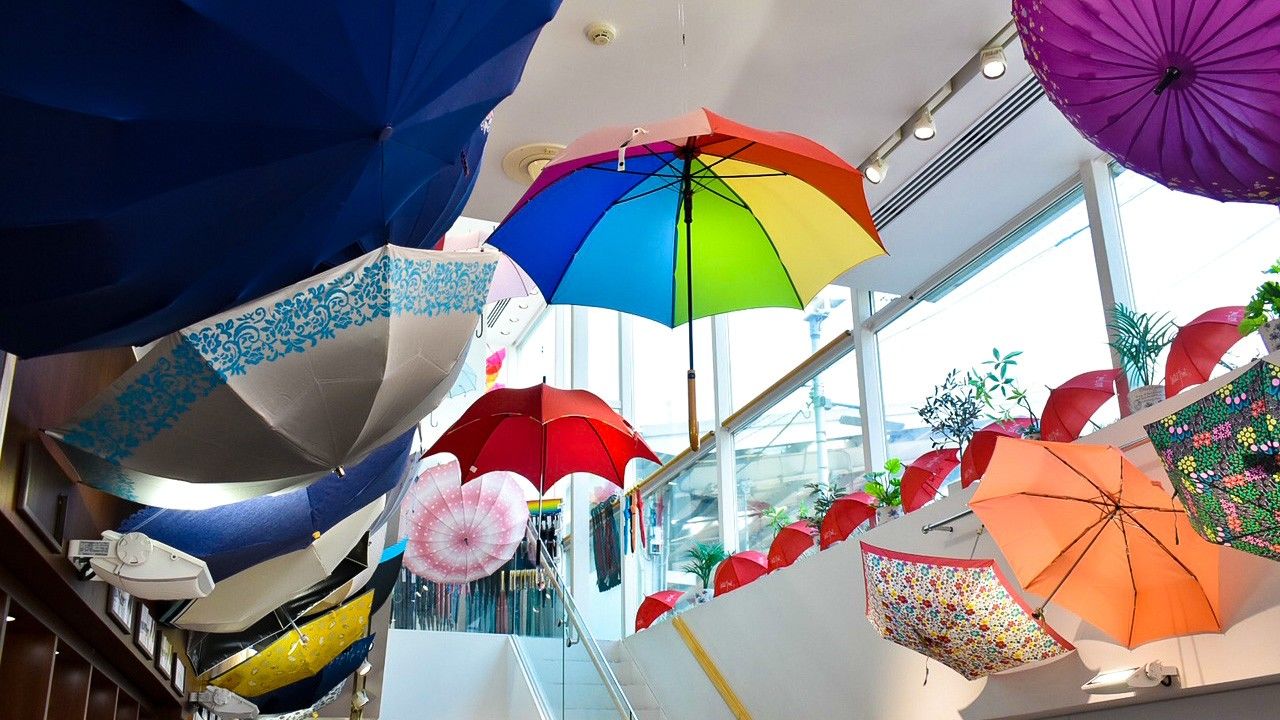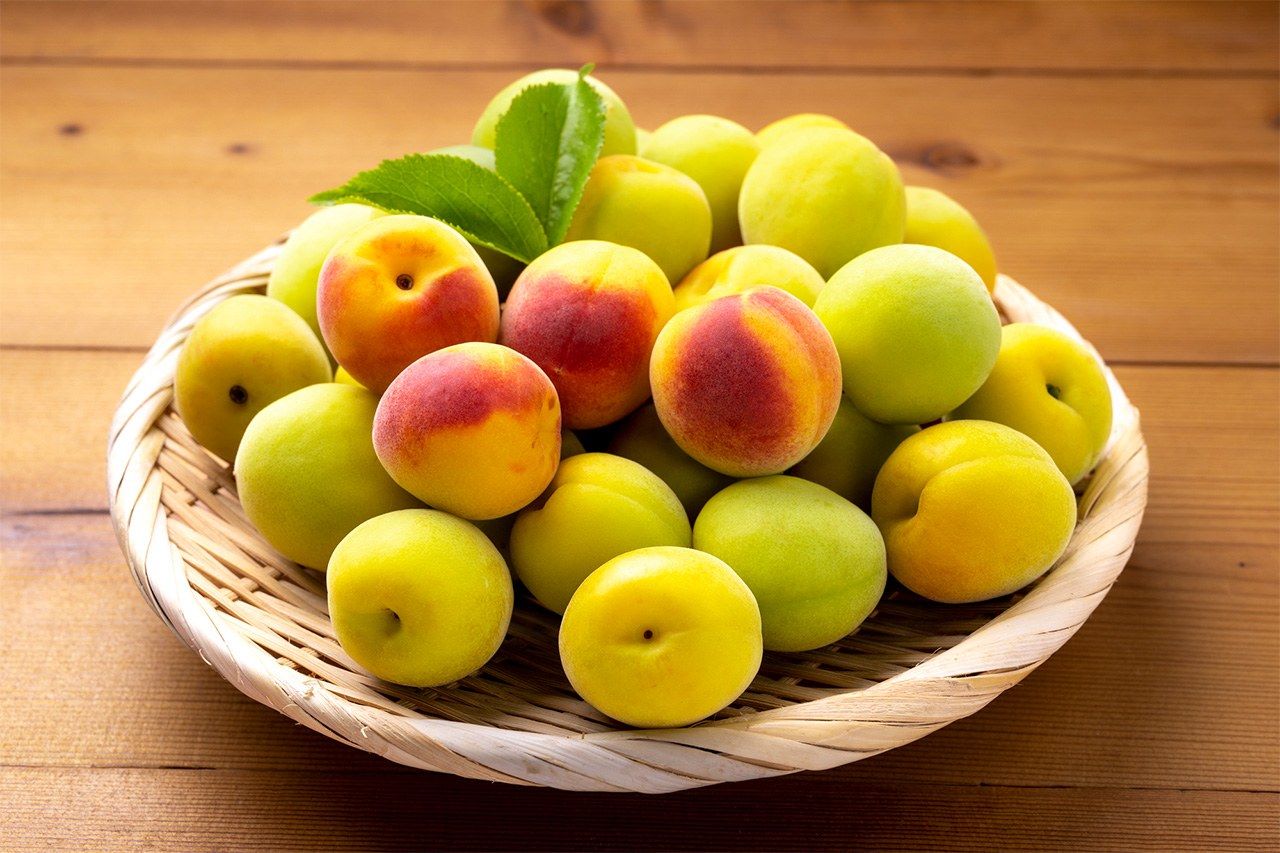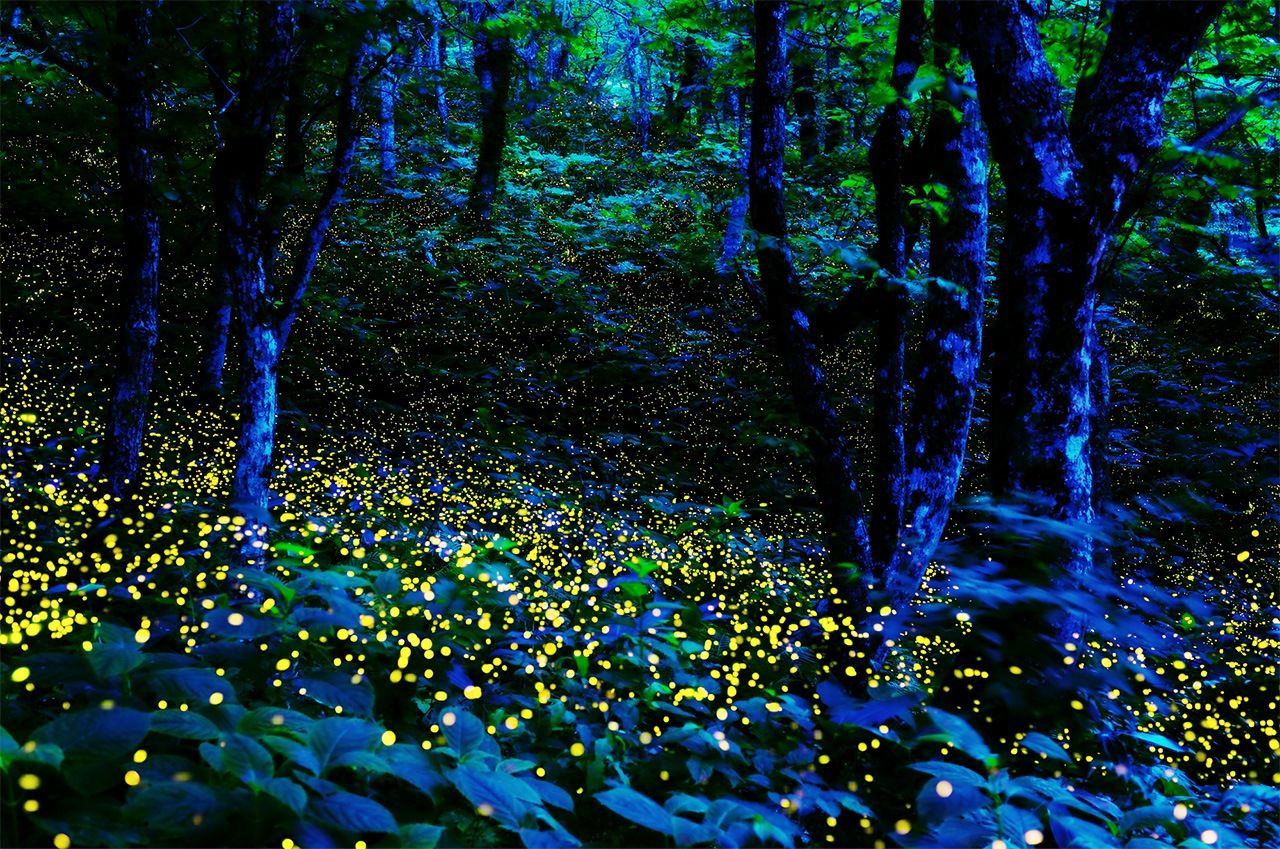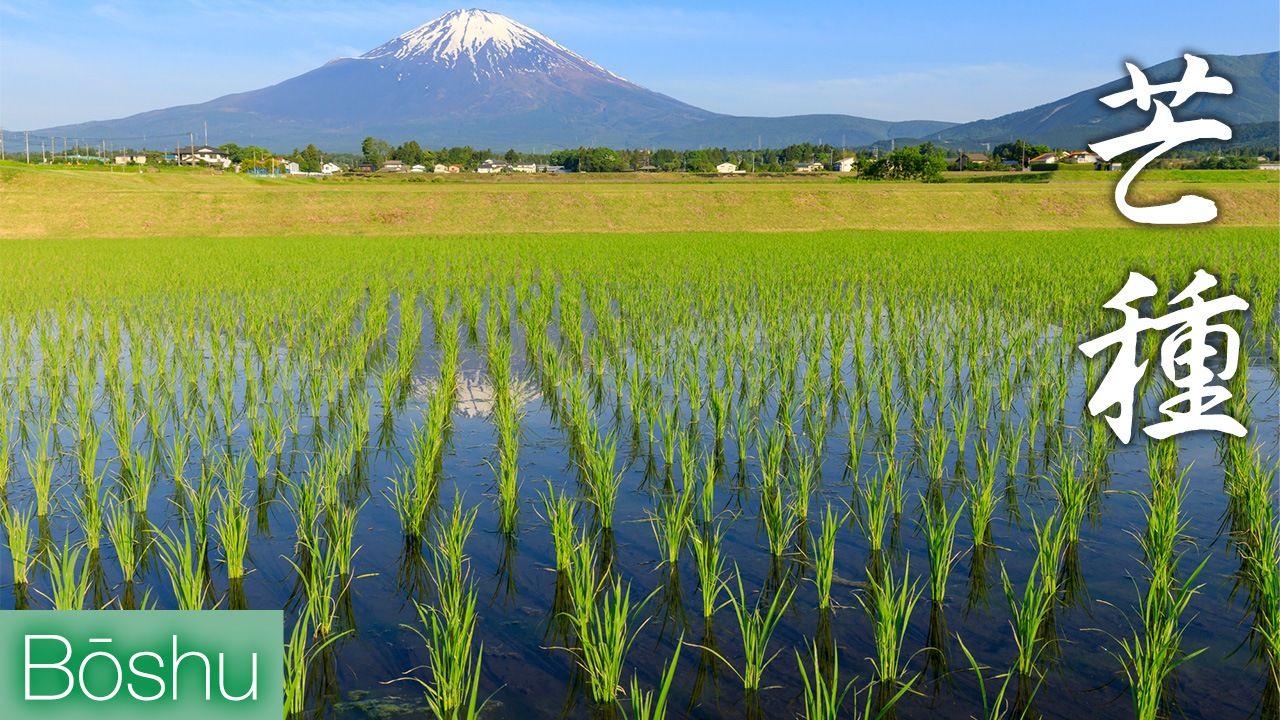
Bōshu (Grain Beards and Seeds)
Culture Lifestyle History Environment- English
- 日本語
- 简体字
- 繁體字
- Français
- Español
- العربية
- Русский
The start of the solar term Bōshu (Grain Beards and Seeds) falls around June 6 on the modern calendar. The name refers to the time of year when it is best to plant cereals such as barley and wheat whose seeds grow bristle-like appendages known as “awns” or “beards.” They are generally planted around this date, although the timing varies across Japan. Rainy season is also just around the corner.
This article will look at events and natural phenomena in the period roughly from June 6 to 21.
Tsuyu (Rainy Season)
The rainy season, or tsuyu, is written in kanji as “plum rains” (梅雨), apparently in reference to the time of year when plums ripen and change color. On the old calendar, the start of the rainy season (around June 11) was calculated as the 135th day after Risshun, the beginning of spring. Nowadays, due to regional climatic variations, the Japan Meteorological Agency’s declaration of the rainy season is considered the best guide. People monitor this news closely, in order to get out summer clothing and rain gear, and take measures to avoid mold outbreaks in the home. Shops have displays of umbrellas, boots, and raincoats.
Ume (Plums)
It is peak season for ume or plums, which appear on shelves at supermarkets and greengrocers. To make plum liquor (umeshu) it is best to use green plums, but riper fruit are used for pickled plums (umeboshi). Fully ripened plums can be stewed with sugar to make jam.
Anniversary of Time (June 10)
The eighth-century historical chronicle Nihon shoki records that Emperor Tenji (626–671) used a water clock installed at Ōmi Ōtsu Palace (in modern-day Ōtsu, Shiga Prefecture) to make the first announcement of the time in Japan, by bell and drum. The date this took place when converted into the solar calendar is June 10, now celebrated as the Anniversary of Time. In ancient times, the day was divided into 12 “hours,” associated with the 12 signs of the Chinese zodiac, and the time was announced by bell or drum. People ate twice a day, and also took a light meal when the drum sounded eight times for the “hour” from around one to three in the afternoon. The word for a snack in Japanese, oyatsu, is derived from this count of eight, or yatsu.
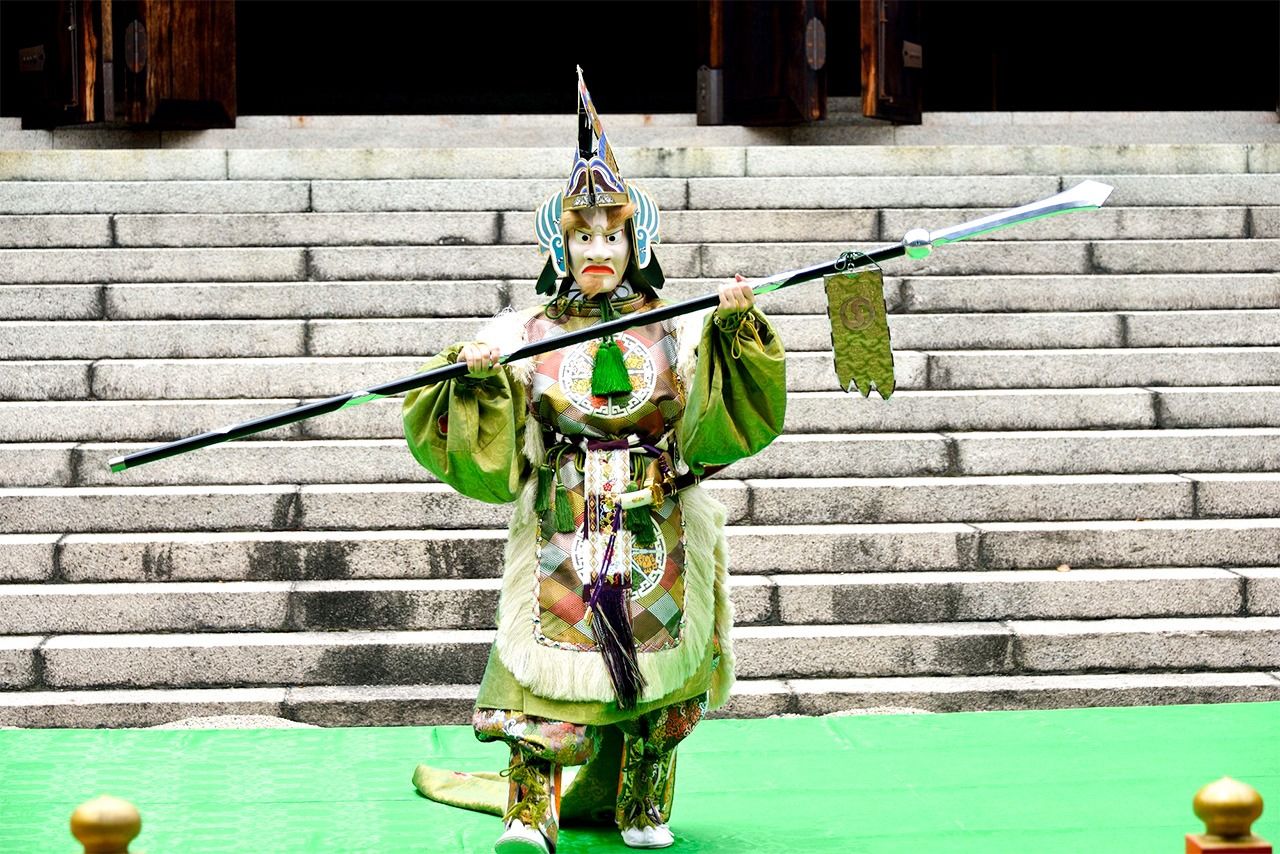
Ōmi Jingū holds its Rōkokusai (Water Clock Festival) to coincide with the Anniversary of Time on June 10. (© Pixta)
Hydrangeas
Hydrangea flowers are a deciduous shrub, first cultivated in Japan, and adored worldwide. They are a prominent flower of the rainy season. The large flower-like blooms are colorful sepals that surround the actual tiny flowers. If they grow in acidic soil, they produce blue blooms, whereas they are pinker in alkaline soil. In Europe, they have undergone much selective breeding. The Western hydrangea (Hydrangea macrophylla) was introduced into Japan in the early twentieth century.
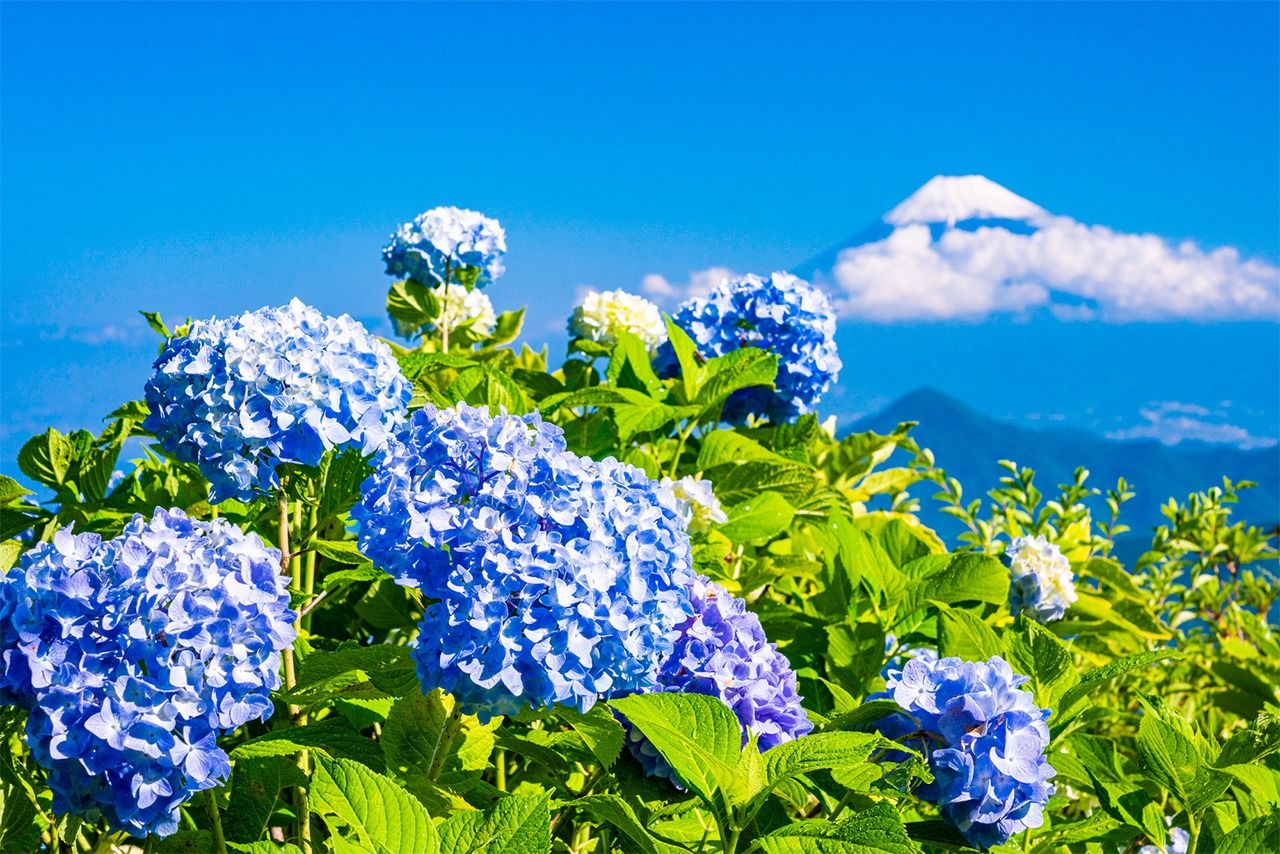
Blue hydrangea flowers growing in acidic soil. (© Pixta)
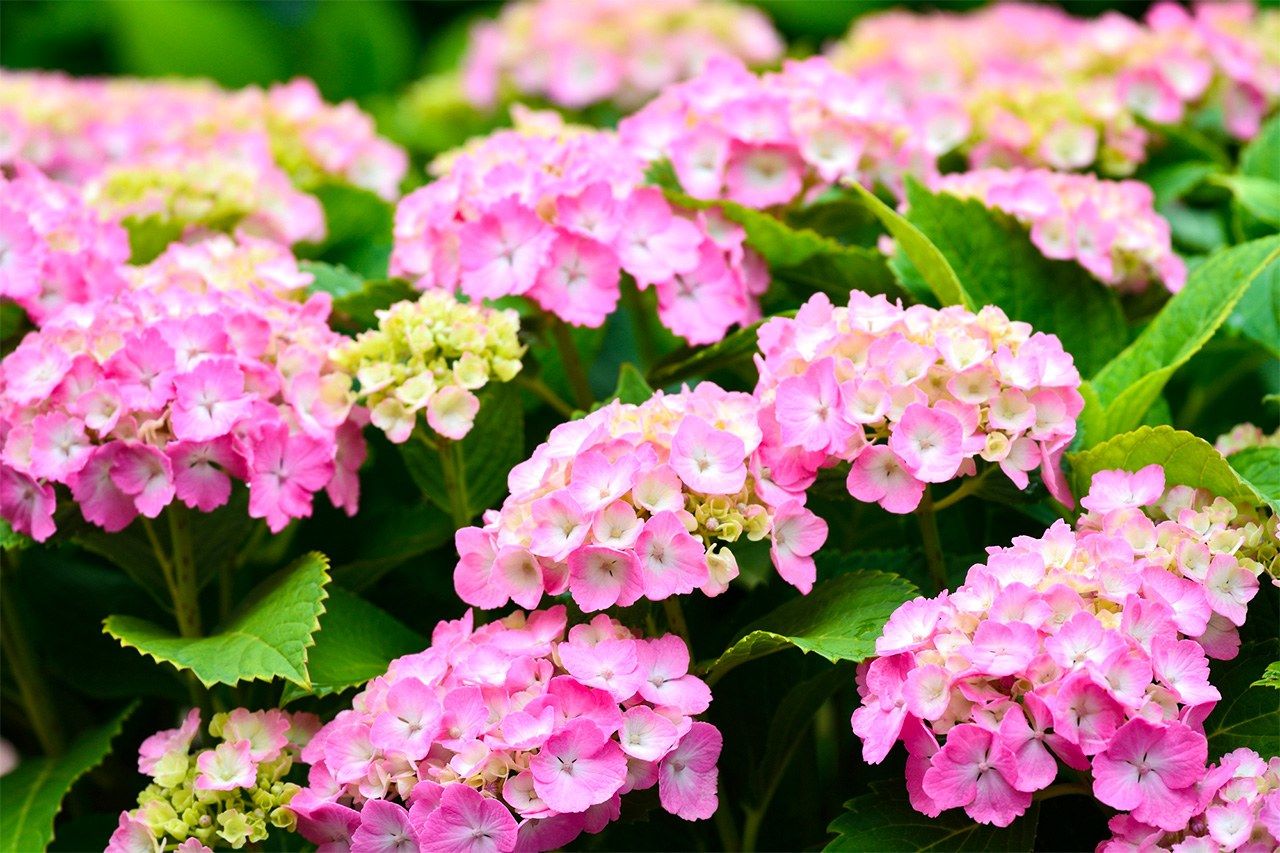
Pink hydrangea flowers growing in alkaline soil. (© Pixta)
Otaue Shinji (Rice Planting Festival) at Sumiyoshi Taisha (June 14)
This Shintō ceremony is performed at Sumiyoshi Taisha in Osaka to pray for an abundant grain harvest. Rice seedlings blessed before the gods are used to begin the rice planting. The ceremony includes a Shintō dance performed by eight young women and a parade of people dressed as helmeted samurai. It is considered one of Japan’s top three rice planting festivals and designated as an important intangible folk-cultural property.
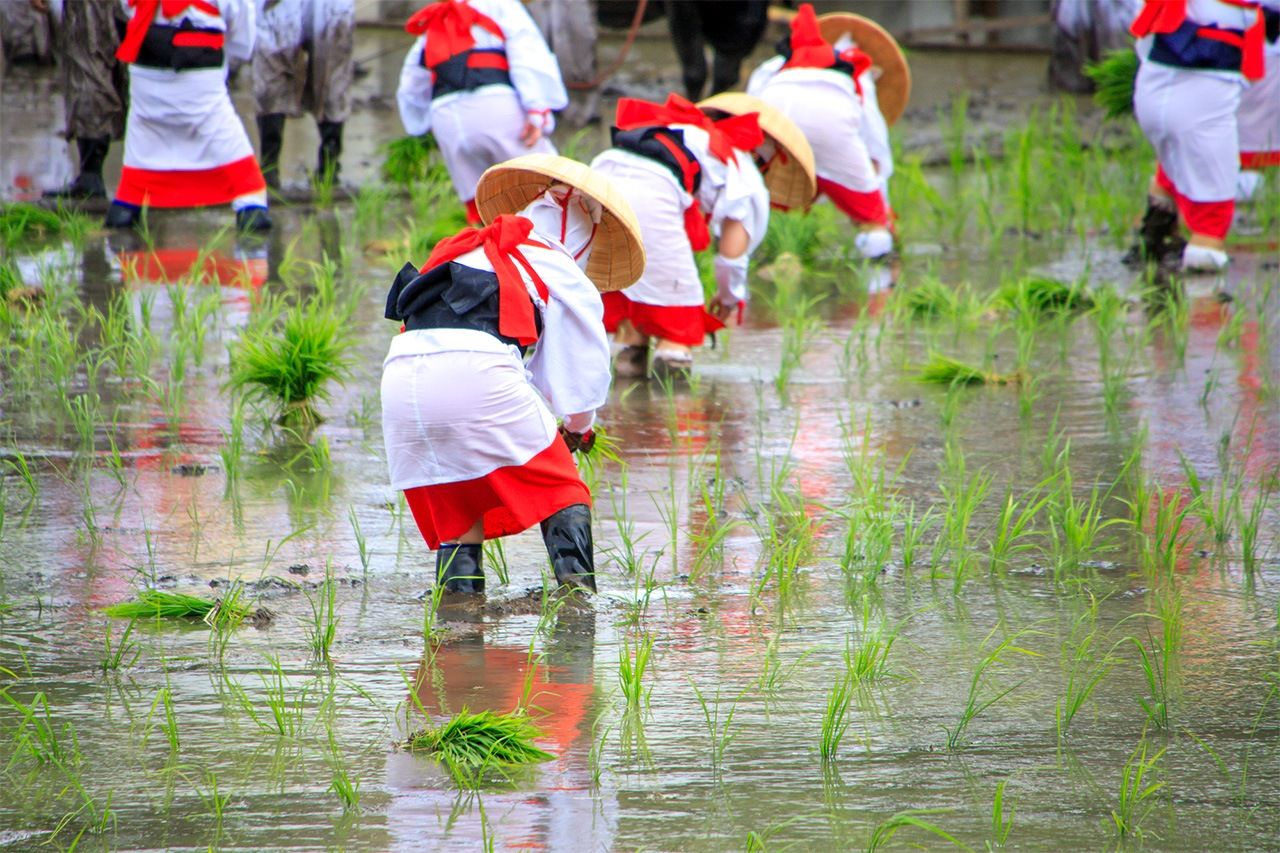
Otaue Shinji at Sumiyoshi Taisha. (© Pixta)
Firefly Viewing (Mid-June)
Fireflies start to glow on humid evenings, around an hour after sunset. Watching them weave their spellbinding dance in the night is a traditional pastime of the season, and is mentioned in Nihon shoki. There are around 50 species, but only a few have adults that glow, such as the Genji (Luciola ruciate), Heike (Luciola lateralis) and Hime (Luciola parvula) fireflies. The insects tend to inhabit clean, gently flowing streams and nearby grass and rice fields, but environmental changes have reduced the number of places they are found, leading to the spread of the firefly conservation movement. Their glowing flight is actually male courtship behavior. Meanwhile, the females wait in grassy areas, glowing irregularly.
Father’s Day
The third Sunday in June is Father’s Day, a custom adopted by Japan from the United States. In Japan, there is a tradition of sending roses.
Wagashi Day (June 16)
Emperor Ninmyō presented the gods with wagashi (Japanese sweets) and mochi (sticky rice cakes) on June 16, 848 in an act to change the name of the imperial era to Kashō. In modern times, the Japan Wagashi Association established Wagashi Day on this date. Kashō no Iwai was a ceremony observed by the imperial court and shogunate in the Edo period (1603–1868) to pray for good health and to stave off disaster. The practice was abandoned in the Meiji era (1868–1912), but in 1979, the date was resurrected as Wagashi Day.
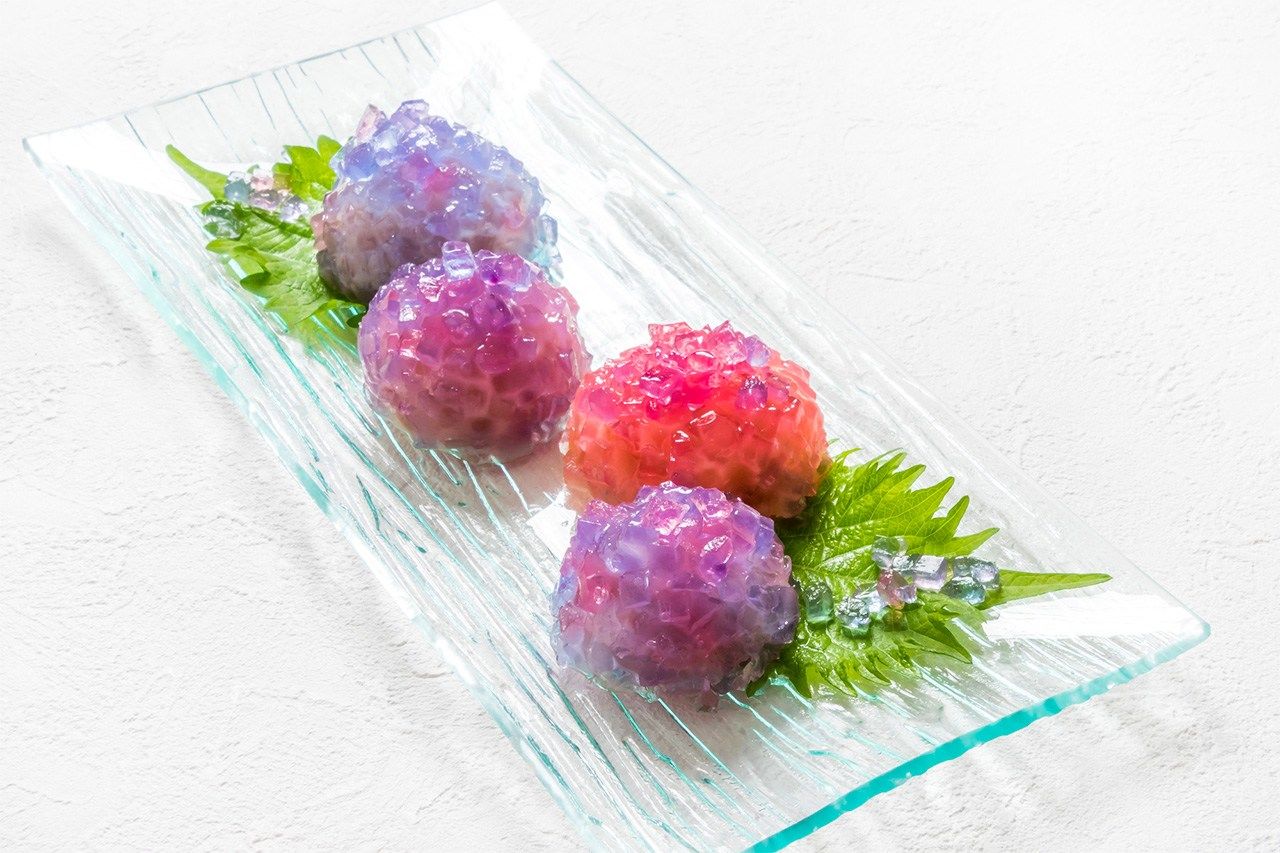
Wagashi resembling hydrangeas. (© Pixta)
Rakkyō (Scallions)
Rakkyō scallions (Allium chinense), are in season at this time of year. They were first brought from China to Japan, where they are now popular to pickle, and often served with curry and rice. This practice is said to have originated when someone served rakkyō pickled in sweet vinegar when there were no other pickles available.
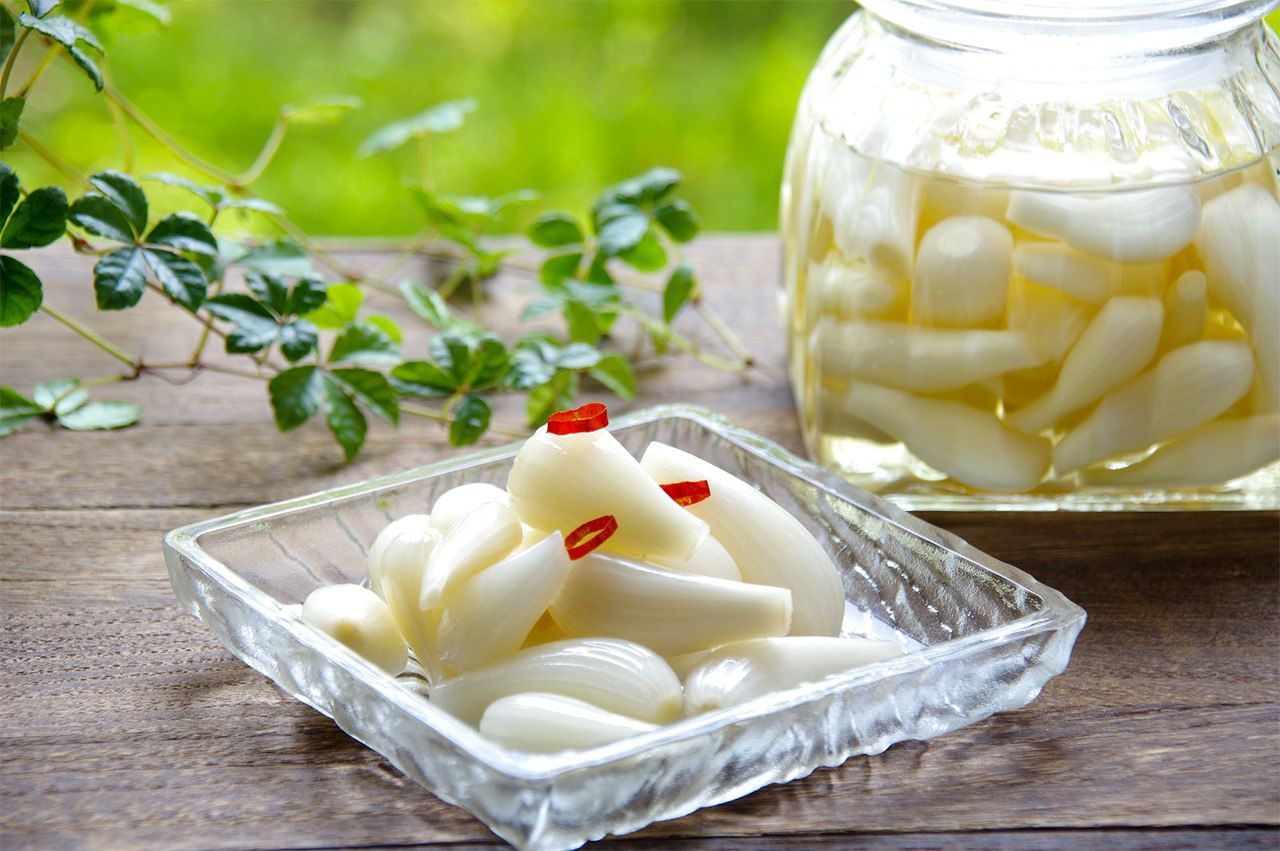
Rakkyō pickled in sweet vinegar. (© Pixta)
Japanese Flying Squid
Surumeika, or Japanese flying squid, are in season from May through September. They are caught throughout Japan, but particularly in Hokkaidō and Aomori Prefecture. Surumeika can be served raw as sashimi, sliced thinly with the skin removed, resembling sōmen noodles (ika sōmen); stuffed with sticky rice and stewed in a sweet and spicy broth (ikameshi; sliced into rings and deep-fried; or served as a simmered dish. Dried squid, atarime, is a popular snack when drinking.
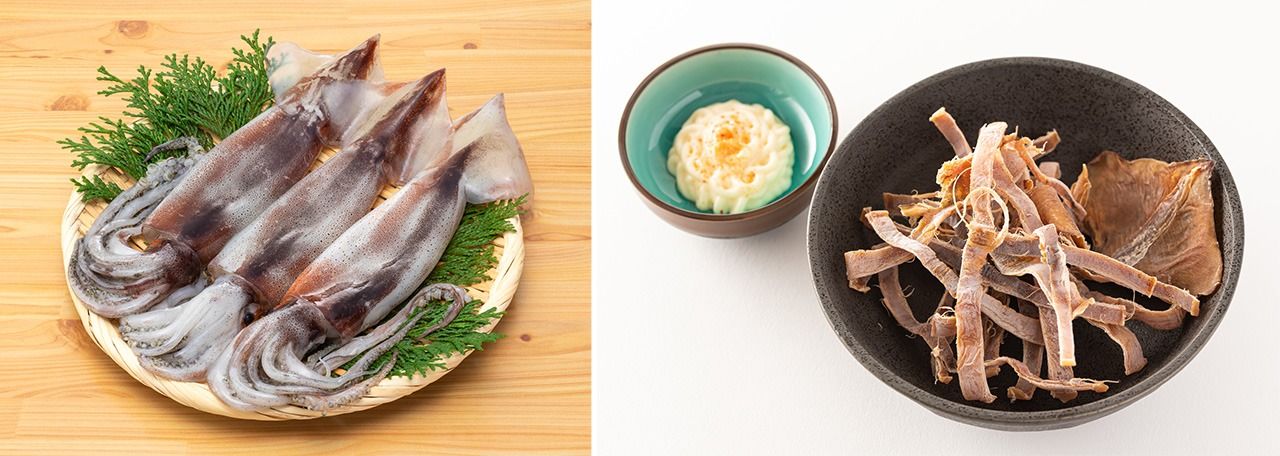
Japanese flying squid (left) and atarime, which is thinly sliced and lightly grilled squid, here served with mayonnaise and chili. (© Pixta)
Suzuki (Sea Bass)
Suzuki, or sea bass, are in season from June through August. The Japanese name resembles the word for “to rinse” and is said to derive from the clean white flesh, which appears as if it has been rinsed. Sea bass is a popular white fish in summer. For a refreshing sashimi style known as arai or to rinse, the fish is thinly sliced then dipped in iced water to tighten the flesh. Even deep-fried, the flesh stays tender.
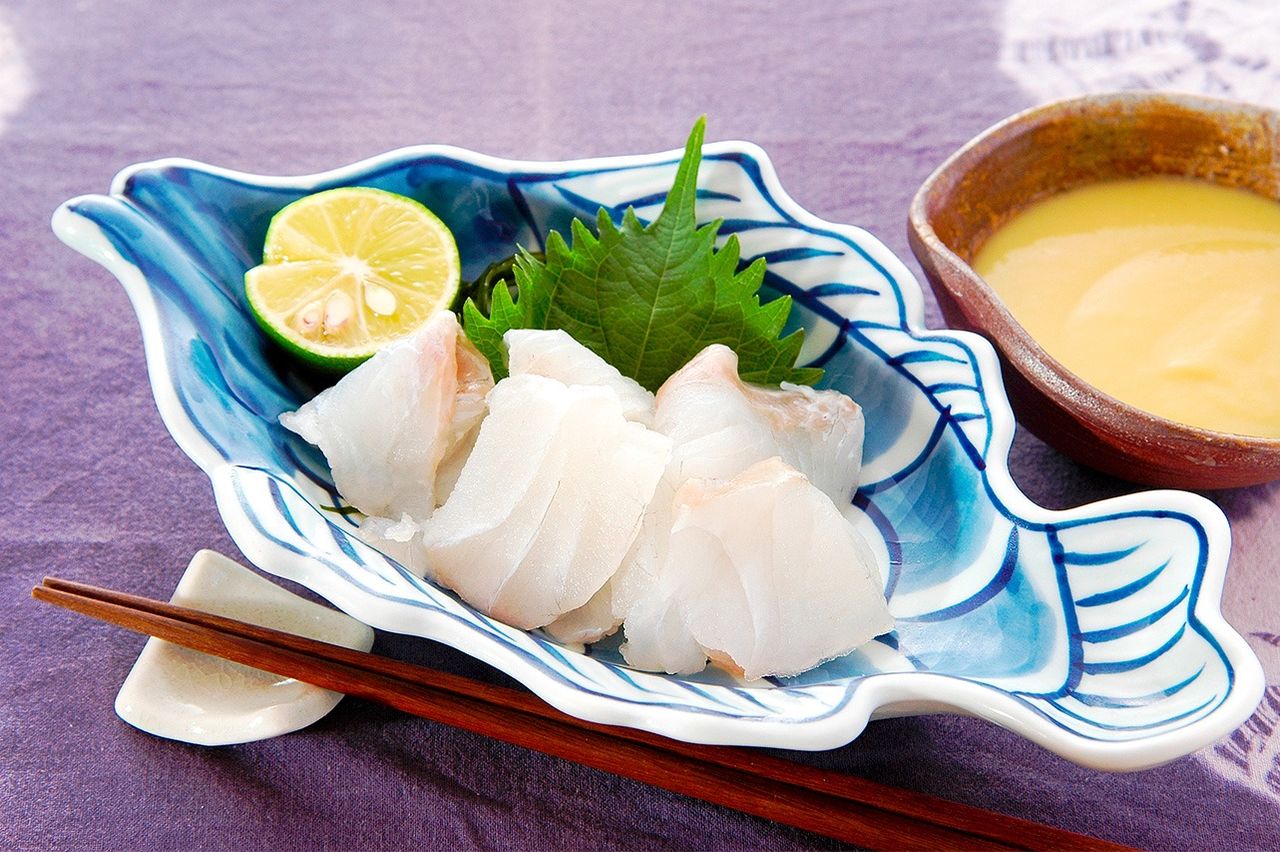
Chilled sea bass as arai sashimi. (© Pixta)
(Supervised by Inoue Shouei, calendar researcher and author, Shintō minister, and guest lecturer at Tōhoku Fukushi University. Banner photo: Mount Fuji reflected in a rice field in Shizuoka Prefecture. © Pixta)
